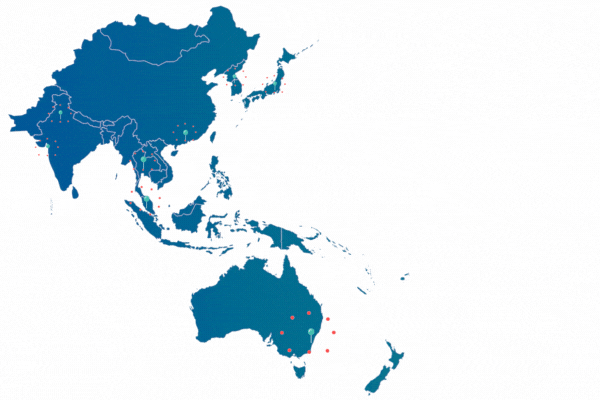For many years content owners, ISPs and other companies with content to deliver or stream have put their trust in large global CDN providers like Akamai. With name recognition and stability on their side, this made sense. But content delivery (and content itself) has grown more localized, and CDN technology has changed to allow anyone to build a CDN to suit their content delivery needs.
It has become easier than ever to take control of both delivery and costs, particularly for regional broadcasters, content owners and ISPs, among others, for whom Akamai and large-scale CDNs aren’t well-represented regionally. Many Southeast Asian countries, for example, have only one point of presence in the entire country. It no longer makes sense to pay a fortune for something with such limitations, especially when you cede control over delivery, have no decision-making power in terms of PoP placement, and which you can now do yourself for a fraction of the cost while reclaiming control and flexibility.
Content delivery in the APAC region
The APAC region will face a number of OTT video content shifts in the coming years. Mobile will come to dominate video delivery, more bandwidth and faster delivery speeds will be available, and more localized OTT services will be introduced. At the same time, data is becoming less expensive and connectivity more widely available -- and the introduction of 5G will accelerate this in some markets, particularly as OTT providers look to deliver enhanced user experiences. There are already a host of different OTT players vying for viewer attention, ranging from the big global hitters, like Netflix and Amazon, to local companies like Viu and Iflix.
As in most markets in the world, everyone is looking to monetize their services, but subscribership isn’t enough. In the APAC region, subscriptions are unpredictable because there’s a higher tolerance for free content supported by ads, and some countries aren’t as accustomed to paying for content. Content piracy is also a thorn which streaming providers have to take into account. Providers need to find the balance between low-priced monthly subscriptions and compelling local content… and tap into savings elsewhere. Where subscription numbers are unstable, optimizing the content delivery infrastructure is one way to save money and improve performance at the same time, which is where the private CDN and microPoP solution becomes a viable option.
The APAC region is also ripe for OTT providers partnering up with ISPs and telcos to help not just with billing issues but with developing content delivery solutions together. A number of ISPs in the region have begun to build their own multi-tenancy CDN solutions, offering local CDN services onward to customers (like OTT providers), providing the local reach and flexibility with local options and support. It’s just as easy, though, for OTT providers to build out their own private CDNs, putting PoPs where just where they are needed.
Local control, local audience, lower cost: The new way of the CDN
Regional and local broadcasters, streaming/video companies, and content providers don’t actually need the “big guns” of large commercial CDNs to blast video all over the world. Likewise, they do not need to partner up with ISPs, as suggested above. These are options. but when serving content to a local audience, perhaps situated only within a single region of a country or the entire country, global solutions aren’t optimized for regional and local content concerns, and while they meet certain predictability needs, they aren’t always the right choice for performance and end-user experience in regional markets, especially with video delivery. And even with a local partnership, you still may have to give up some control as to where you put your PoPs, which diminishes the value of taking control of your own delivery and making your costs transparent and predictable, if not lower.
CDN technology is basically a set of distributed caches, and when setting up your own caching CDN, you have the opportunity to optimize for your local/regional needs. That is, you want to serve content faster and deliver the highest quality user experience possible. As content has become dominated by high-resolution video, caching by itself is not going to scale, and you will benefit from taking control of caching policy and content delivery by understanding how you can scale for your specific needs.
Sometimes these decisions will be based on your geography, that is, if your audience is only in Malaysia or only in Indonesia, it doesn’t make sense to remove content delivery decisions from your own organization or country/region. Other times these decisions will be based on content itself. Is it static content that can all be cached and served from cache, or is it high-res video that might be too expensive storage-wise to keep in cache? Instead you need more efficient storage and logic about where the content should be served from… which is why it’s a good time to take control of your own content delivery to optimize the strategy now.
Keeping content delivery more local and selecting your own PoPs and micro PoPs ensures:
- Better performance (fewer long-distance roundtrips for your content) at a more predictable price point
- Choice as to where PoPs are placed to ensure nearness to subscriber base/end users
- Complete control over caching and delivery logic
- Potential cost reduction
Content delivery your way: Easier than you think
It’s easier than you think. Once upon a time, setting up your own CDN would have been challenging, time consuming and difficult to manage and maintain. That’s why commercial CDNs have long been entrusted with all the traffic, even when the most local presence was an entirely different country. Now you have options for bringing your content delivery home and making it local.
Creating your own CDN solution can help you “go big by going small”.
Join our upcoming webinar to see how you can build your own CDN from scratch in 30 minutes 👇
/VS-logo-2020-197x60.png?width=136&height=60&name=VS-logo-2020-197x60.png)





